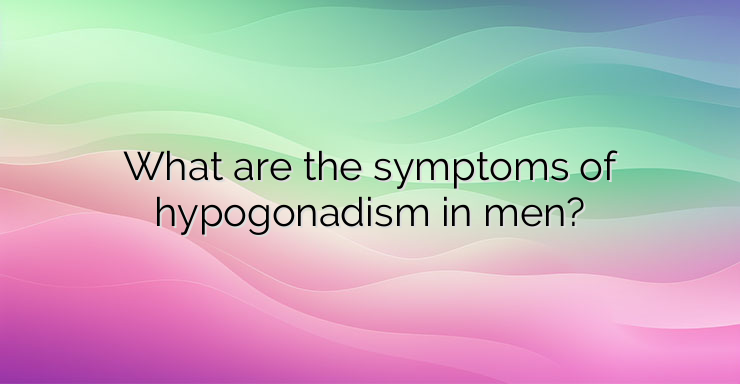What is hypogonadism in men? Male hypogonadism is a condition in which the body does not produce enough of the key hormone for male growth and development during puberty (testosterone), or does not produce enough semen, or both. Male hypogonadism can occur as a congenital condition or may develop later in life, often due to injury or infection. The consequences and how to deal with them depend on the cause of the condition, as well as at what point in life the male hypogonadism occurred. Some types of hypogonadism in men can be treated with testosterone replacement therapy. What are the symptoms of hypogonadism in men? Hypogonadism can begin during fetal development, before puberty, or in adulthood. Signs and symptoms depend on when the condition develops. Occurrence of hypogonadism in males during fetal development If the body does not produce enough testosterone during fetal development, the result may be impaired growth of the external genitalia. Depending on when hypogonadism develops and what testosterone levels are, a baby who is genetically male may be born with: Female genitalia; Genitalia that do not appear to be clearly male or female (pseudohermaphroditism, ambiguous genitalia); Underdeveloped male genitalia Occurrence of male hypogonadism during puberty Male hypogonadism can delay puberty or cause incomplete or lack of normal development. The condition can hinder: The development of muscle mass; The deepening of the voice (in which the voice undergoes a change in timbre (mutation), becoming denser, deeper, heavier); Growth of body and facial hair; Penis and testicular growth AND can cause: Excessive growth of arms and legs in relation to the body; Development of breast tissue (gynaecomastia) Occurrence of hypogonadism in males during puberty In adult males, hypogonadism can change certain male physical characteristics and disrupt normal male reproductive function. Early signs and symptoms of the condition may include: Decreased sexual desire; Reduced energy; Depression Over time, men with hypogonadism may develop: Erectile dysfunction; Infertility; Reduction of facial and body hair growth; Decrease in muscle mass; Development of breast tissue (gynecomastia); Loss of bone mass (osteoporosis) Severe hypogonadism can also cause mental and emotional changes. As testosterone declines, some men develop symptoms similar to those of menopause in women. These may include: Difficulty concentrating; Hot waves. In the presence of symptoms of male hypogonadism, it is necessary to seek medical help. Finding the cause of hypogonadism is an important first step to getting appropriate treatment. References: 1. Snyder PJ.Clinical features and diagnosis of male hypogonadism 2. AskMayoExpert. Male hypogonadism (adult). Mayo Clinic 3. Gardner DG, et al., eds. Testes. In: Greenspan’s Basic and Clinical Endocrinology. 10th ed. 4. Bhasin S, et al. Testosterone therapy in men with hypogonadism: An Endocrine Society clinical practice guideline. The Journal of Clinical Endocrinology and Metabolism


Leave a Reply